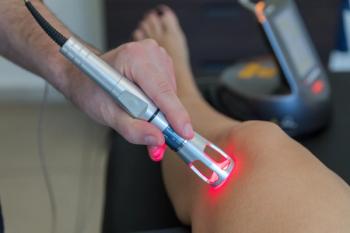
- Dermatology Times, May 2021 (Vol. 42, No. 5)
- Volume 42
- Issue 5
Clearing the Confusion Around Specific Dermatoses of Pregnancy
In a presentation at the American Academy of Dermatology Virtual Meeting, Marcia S. Driscoll, MD, PharmD, gave guidelines for diagnosing and treating four dermatoses of pregnancy.
Overlapping terminology around pregnancy-specific dermatoses can make diagnosing such conditions difficult, especially since these are relatively rare conditions. Also, dermatoses of pregnancy (DPs) can occur postpartum and treatment options may be limited by safety concerns for the pregnant patient and fetus.
Marcia S. Driscoll, MD, FAAD, Clinical Associate Professor of Dermatology, University of Maryland Medical System, Baltimore, Maryland, outlined diagnosis and treatment in a presentation at the American Academy of Dermatology Virtual Meeting Experience 2021 (AAD VMX).1 The conditions covered were: polymorphic eruption of pregnancy (PEP); pemphigoid gestationis (PG); atopic eruption of pregnancy (AEP) and intrahepatic cholestatis of pregnancy (ICP).
PEP usually presents late in the third trimester, except in multigestational pregnancies where it may present earlier. Pathogenesis is unknown but potential triggers include rapid late abdominal weight gain or excessive parental weight gain that causes connective tissue damage.
Clinical presentation often includes pruritic edematous and erythemic papules and plaques typically starting within striae distensae and/or on the abdomen with umbilical sparing. PEP can spread to proximal thighs and trunk over days, typically sparing face, palms, soles, and mucosa.
There is a variable morphology of lesions. Diagnosis can be clinical; if in doubt about PG, biopsy for pathology and direct immunofluorescence (DIF). Treatment is usually topical steroids and antihistamines; in very severe cases a short-course systemic steroid may be prescribed. The condition normally resolves within 4 weeks or with delivery and poses no danger to parent or infant and typically will not recur in subsequent pregnancies unless they are multigestational.
PG is rare and usually presents in the second or third trimester or immediately postpartum. It’s characterized by extremely pruritic urticarial papules and plaques, starting on the abdomen and involving the umbilicus before progressing to tense herpetiform vesicles and bullae with spread to extremities. It usually spares the face, mucous membranes, palms and soles. Diagnostics include histology and DIF or via the ELISA technique. Treatment is usually systemic steroid tapering very slowly if no new vesicles, or increasing dosing near the due date anticipating a postpartum flare. Refractory cases may be treated with IVIG, cyclosporine or plasmapheresis. Postpartum flares may be treated with prednisone, azathioprine, hydroxychloroquine, dapsone or cyclosporine.
There is a risk of premature and small for gestational age (SGA) infants, who also may develop a transient bullous eruption, while the parent is at higher risk for autoimmune disease (especially Grave’s disease) and a recurrence of PG in future pregnancies.
AEP is the most common of the four conditions and usually presents before the third trimester. A personal or family history of atopic dermatitis is a risk factor. There are two types: eczematous (E-type) and pustular (P-type). The patient in Driscoll’s case study presented with 1-3mm non-follicular erythematous pustules over extremities and trunk, with fine diffuse scales and excoriations, no vesicles, no edematous plaques and no pustules. If there are pustules, cultures are typically sterile. The only parental or fetal complication is the possibility of the infant developing atopy, and treatment is usually topical corticosteroids or antihistamines.
ICP incidence varies widely around the world and has hormonal, environmental and genetic risk factors. ICP usually presents in the third trimester as severe pruritis in the hands and feet without primary lesions. There may be excoriations and prurigo nodules on the shins and forearms. Jaundice is rare (10% of cases, usually the most severe). Obtaining serum bile acid tests is the easiest and most sensitive way to diagnose this disease. If primary lesions are present, rule out other DPs with DIF and biopsy. Typically, the condition resolves with delivery. Ursodeoxycholic acid will improve pruritus and cholestatis, but treatment should be given by or at least in consultation with a hepetologist. There is a 19-60% increased risk of prematurity, meconium staining amniotic fluid, fetal respiratory distress and stillbirth (though this last is unusual). Parental risks include, in severe cases, malabsorption of vitamin K and possibly increased risk of other hepatobiliary diseases, as well as a risk of recurrence in subsequent pregnancies. Early induction of labor is often considered and close fetal monitoring is recommended.
Reference:
1. Driscoll S. Pregnant pause: how to evaluate and treat your pregnant patients. Presented at: American Academy of Dermatology 2021 Virtual Meeting Experience (VMX) annual meeting; April 23-25, 2021.
Articles in this issue
over 4 years ago
Administrative Burden of Prescribing Biologicsover 4 years ago
Emerging Biologics Make Waves in ADover 4 years ago
Master Techniques to Treat Eye Issuesover 4 years ago
Current and Upcoming Topicals in the Pipeline for ADover 4 years ago
Off-label Biologics Target Wide Range of Skin Diseasesover 4 years ago
Debunking Sunscreen Controversiesover 4 years ago
Off-label Sarecycline Combats Papulopustular Rosaceaover 4 years ago
What’s Trending in Skin Care? May 2021Newsletter
Like what you’re reading? Subscribe to Dermatology Times for weekly updates on therapies, innovations, and real-world practice tips.

















